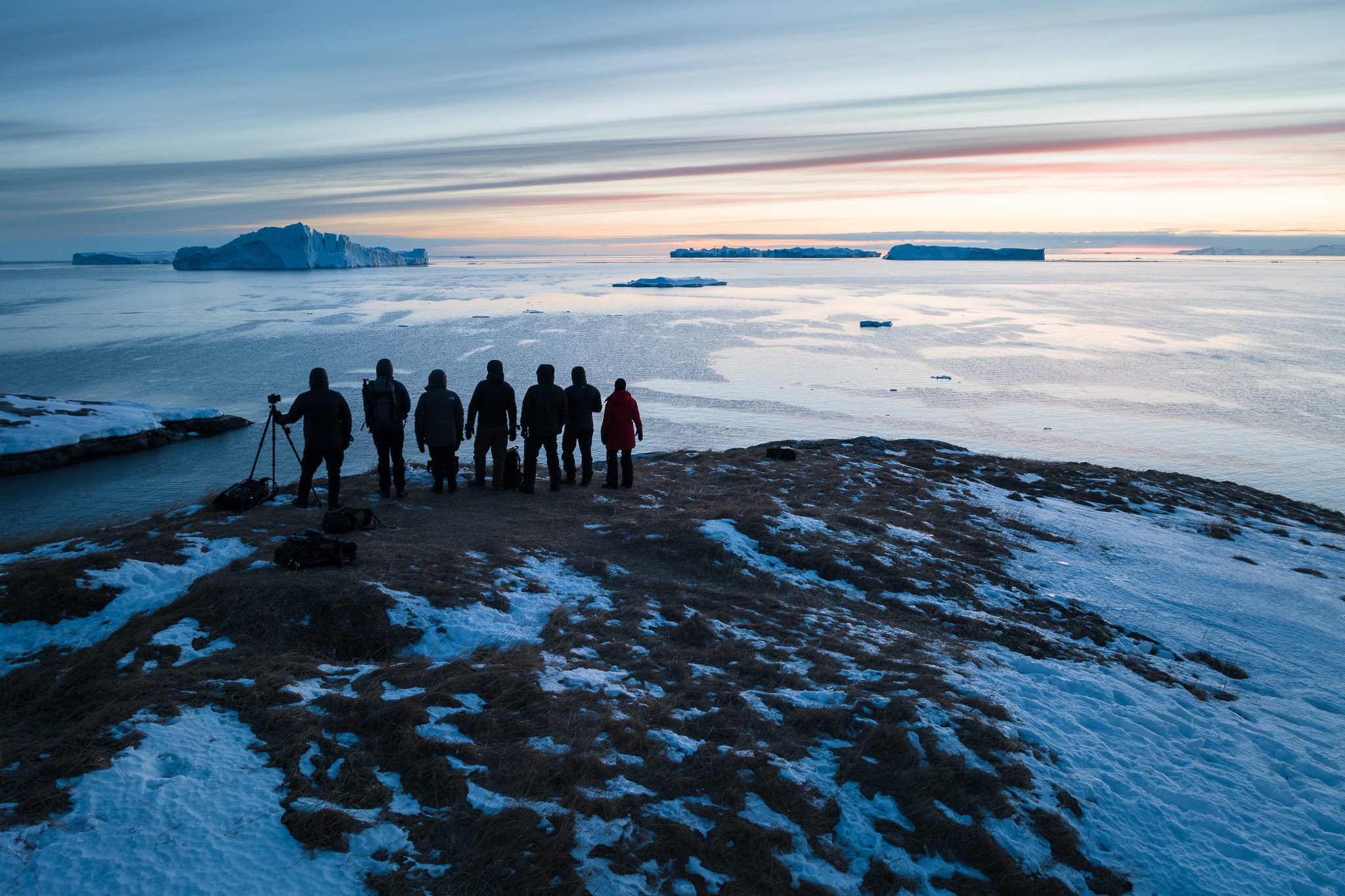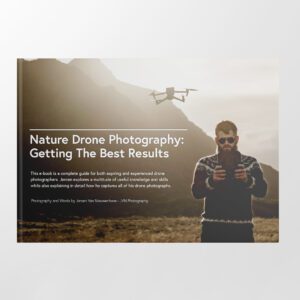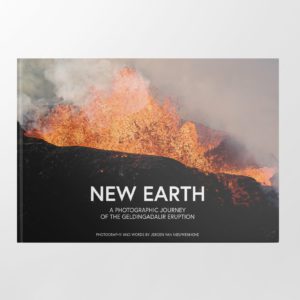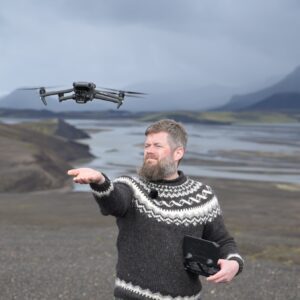Note: this is entirely my own opinion. If you disagree and want to share that respectfully, I invite you to engage in a discussion in the comments below this blog post. Respectful discussions are a great way to better understand each other’s points of view.
2023 is the year in which artificial intelligence, or AI, has taken the world by storm. The absurdly fast development of the technology behind AI has forever changed the future of photography, and art by extension. AI even has photographers fear for the existence of their jobs. While it is true that AI will change photography, I don’t believe it will ever be able to replace it or make it obsolete. In this opinion piece, I want to outline a few reasons why that is.
Let me get one thing out of the way: I am not against AI generated images, composites or anything similar to that. I believe there is definitely a place within the art world for it. However, I don’t believe that is within the photography world.
We live in an ever-changing world and the photography industry is not an exception to that. This industry has changed many times before and will probably do so many times again. A few examples come to mind. The digital camera revolution which pushed analog cameras to the background. The invention of the passport photo booth, which put many local portrait photographers out of business. Smartphones & their computational photography, which has almost completely obliterated the point-and-shoot camera market.
Every time the industry changed in a substantial way, someone needed to adjust, be resilient, and reinvent their approach. This brings us to my first reason.

An example of Adobe’s recent presentation of Adobe Firefly inside Photoshop. Using Generative Fill, it can reimagine a whole scene. A pretty extreme example of what generative AI is capable of.
It’s About The Story
What is at the core of photography? Why do people photograph? What makes people get up early in the morning to get that perfect sunrise? There is no right or wrong answer to that question. It can be a variety of things but to me it’s very clear: capturing memories.
Initially, I began sharing the stories behind my photographs as a way to go against the extreme compositing I noticed on social media, which sometimes people tried to pass off as actual photography. With ‘extreme’ I mean composites where, for example, someone replaces the sky of their photograph with crazy northern lights. While this is definitely a form of digital art, it’s not photography to me because there is no memory attached to such images. Someone quite literally sat x amount of hours behind a computer to create an image which popped into their imagination. There is no story to be told there. There was no anticipation, planning or struggle to be there when that perfect moment occurred so you could take the shot.

Being there in the moment and experiencing scenes such as these stunning views in Greenland generate stories that are worth telling.
AI has that same problem. It has arguably an even larger problem as it’s much easier to create an AI artwork with the latest tools. You spend significantly less time on perfecting that dream image. You simply prompt a generative AI (write a set of instructions) to whip up your perfect dream shot in a matter of seconds. Don’t get me wrong. You can do beautiful things with these tools. However, to me the results you get feel empty because none of the portrayed situations were ever real.
As a way to adjust to the increasing popularity of generative AI (now it’s even a part of Photoshop), and staying relevant in a changing world, I have pivoted around that lack of depth, background and story. For example, I am putting more and more effort in my social media captions. I write lengthy texts explaining my thought process or sharing a story about when I took that particular shot. I also launched a new blog series called ‘Behind the Shot’. The whole setup of this series is to explain what went on behind that single image you may have seen on social media. And it works. People love a good story, which shows the relevance of sharing those memories and ultimately the relevance of photography.
Storytelling his become even more important in my work and that’s why I created my ‘Behind the Shot’ series. Read the story of how this photograph started it all for me.
This story is not lengthy or exciting, but it is a great story to explain how this one moment helped me to recover my motivation and inspiration. Read the story behind this photograph.
The road to photographing this mountain wasn’t straightforward to me. Only on the third attempt did I finally get my first photograph of it. Read the story behind this photograph.
Thirst for Realism
As surrealism has taken over the photography world through composite photography and AI, I noticed more and more people becoming sceptical of the photography they are seeing. I regularly get questions such as these on my social media:
“Is that sky real?”
“Are your lava videos CGI?”
“The northern lights are never that bright. FAKE!”
This shows that some people have become so sceptical of photography, for example on social media, that they no longer believe what they see is real. They are expecting it to be fake.
On top of that, there are many composites that portray conditions which are too perfect. This has changed the idea of what people think is good nature photography. By not disclosing something is digital art, it raises expectations of what photography should be. Some digital artists, which create these types of images, don’t disclose that they are composites or generated with AI. This means they are effectively lying by omission. While there is nothing wrong with the creation of such images (it’s a form of art after all), there is a problem with calling it photography. They may have used a camera to capture certain parts of the images but by manufacturing an image in Photoshop, they have created digital art.
A few months ago, a photographer went viral with stunning images of snow leopards. These were beautiful images, which were stunningly well composed, showing this elusive animal in its natural habitat. Unfortunately, as it turned out a few weeks later, these images were all composites. The photographer had created a story surrounding the images, telling the tale of the struggle to get these photographers. Later it turned out even the snow leopards in the photographs were taken from another photographer’s work. While this is certainly an extreme case, it illustrates well how some resort to extraordinary measures to gain popularity in the photography world and how people are right to be sceptical of what they see.
Both examples have led to a situation where there is a large group of people which are thirsty for reality again. They don’t want to be deceived. They want to see things which they know are not fabricated in Photoshop or generated by AI. They want to see the world for what it is and not what an artist has fantasised about. This goes together with my first reason: it’s about the stories. One way to show your imagery is real, is by sharing a background story about it.
For me the experience, the being there at the right moment, is far more important than making a stunning photograph. Being able to think back to that moment when you took a certain photograph is the most important thing about photography.
Want to read the story behind this photograph? I recently wrote a Behind the Shot article on it.
Creativity Needs A Creator
As the technology stands today, AI is not able to be creative. It doesn’t have a conscious mind and it cannot portray certain scenes in a certain way to convey a subliminal message. Generative AI still needs a human mind to build an image and it certainly needs an artistic mind to create beautiful, intentional, pieces of art. Some photographers and digital artists have pivoted around that fact. They have made incredibly clever and beautiful artworks with the help of generative AI.
Antti Karppinen, a Finnish digital artist, has done some stunning work surrounding this. One example of his work which I really liked was a project for Helen, one of Finland’s largest energy companies. This company made a children’s book about a character named Ellen which was intended to create accessible information about energy. Antti’s task was to create a real life influencer version of the cartoon character in this book. Using a personalised AI model he created a human version of Ellen, which was placed into various real life situations where she, for example, posed with employees.
Antti’s work shows how even the cleverness of generative AI still needs a great creative mind to get really artistic results.
How AI Can Complement Your Photography
What can AI do for you to complement your photography? One clear advantage is that AI can help you increase your keeper rate. The keeper rate is the amount of photographs you end up keeping after a session. But does that work? There are several subtle AI powered features available to photographers now. These features don’t take things into the extreme but help you improve the quality of your images. So what tools am I referring to?
- Noise reduction (Denoiser): Photograph at ISO 12800 and clean up the image so it looks as if it was shot at ISO 100. The potential is enormous as you can drastically increase your shutter speed or use smaller aperture lenses without missing out.
- Upscaling (Super Resolution): Do you own a 20 megapixel camera but want to print your photographs onto larger formats? With upscaling, you can increase the resolution drastically which can make your prints look sharper in larger formats.
- Sharpening AI: Did you lose a photograph because it was out of focus or because there was motion blur? Using a sharpening AI tool you can fix up images to get them acceptably sharp.
- AI Powered Masking Tools: Recently Lightroom leveled up their masking tools by adding automatic detection of skies, subjects and even parts of faces. Now you don’t even have to use a brush to mask eyes, lips, … to make adjustments. Tools such as this one save you a large amount of time during post-processing.
- AI Subject Detection for Autofocus: Most modern mirrorless cameras come with clever subject detection functionality which helps you autofocus on subjects such as people, animals, vehicles & planes.


This photograph was taken at ISO12800 and is objectively very noisy. However, with the current AI technologies, this is no longer a problem. The only adjustments made between the two version is that I applied Adobe’s AI Denoiser to the second image. The results are incredible. Especially look at the area around the puffin, where heavy noise is visible.
All these AI powered tools are available right now and can help you recover photographs which you might have deemed a total loss. While some of these tools are in their early stages, they already yield very usable results in many cases.
Can you imagine the potential and what the future will bring? I for one would love to see an AI powered tool which helps you filter photographs after a lengthy bird photography session. In this kinds of session you sometimes take hundreds of photographs of the same scene, with minute differences. Imagine not having to go through each one to remove those with clipped winds, slight motion blur, out of focus subjects and more.
What Do You Think?
What do you think? Are composites and AI photography or not? Are they a threat? Will this type of digital art replace photography in the future?
Support Jeroen’s Work
As an independent photographer, Jeroen partially relies on your support to keep producing worthwhile content such as blogs, photographs, books and much more. If you want to support his work, it is possible to do so by buying his e-books & books, prints or calendars.
You can also sign up to the newsletter to stay up to date on new blog posts, projects, workshops and other interesting information.
Thank you for considering!

















